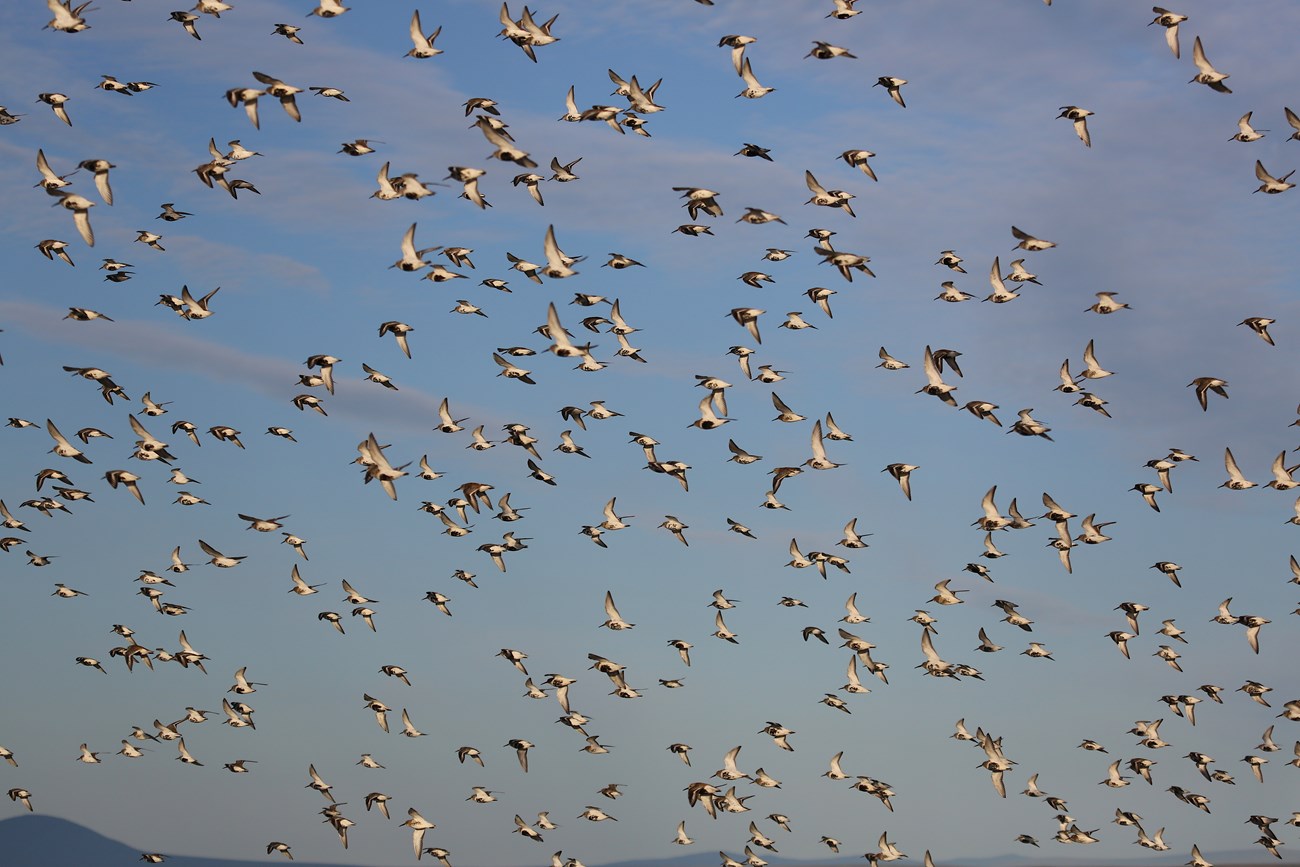Last updated: January 28, 2025
Article
Safe Flight, Dark Night

NPS / Jim Pfeiffenberger
International Migratory Bird Day is an appropriate time to reflect on the importance of migratory stopover sites—restorative places that help birds along the way. Birds migrate long distances between nesting and wintering sites. The journey is hard and often perilous, as they endure storms and other weather conditions, and cross continents and oceans before reaching their destinations.
Outdoor lights at night from towers, homes, lit buildings in cities, and special lighting displays are among the factors that make their course potentially deadly. Birds navigate by night as well as day, using star patterns and the rotation of the sky to guide them. Night lights disorient their migration, causing them to veer off course, slam into surfaces, or circle endlessly, wasting crucial energy and, ultimately, collapsing from starvation.
Biologists estimate that 300 million to nearly one billion birds die annually in such incidents in North America alone.
National parks are an important respite for these long distance migrants, providing safe, resource-rich, habitat. Coastal parks like Biscayne, Assateague Island, and Padre Island are often the first stopover sites for birds coming from across the Atlantic Ocean. Together, these and other parks across the USA form a corridor of protected lands that shelter and restore birds during their passage. Naturally dark environments are a key element of this equation and necessary for their survival. Keeping parks dark at night and free from the glare of light pollution is part of the NPS mission to protect wildlife and cultural-historic sites, and enhance the visitor experience. In so doing, national parks support our feathered friends along the way.
You, too, can help migrating birds by being mindful of your porch lights at night, and for sharing these ideas with your friends, family, and community.
Article by Julie West, communications specialist with the NPS Natural Sounds and Night Skies Division.
Learn more about what the NPS Natural Sounds and Night Skies Division is doing to protect night skies.
